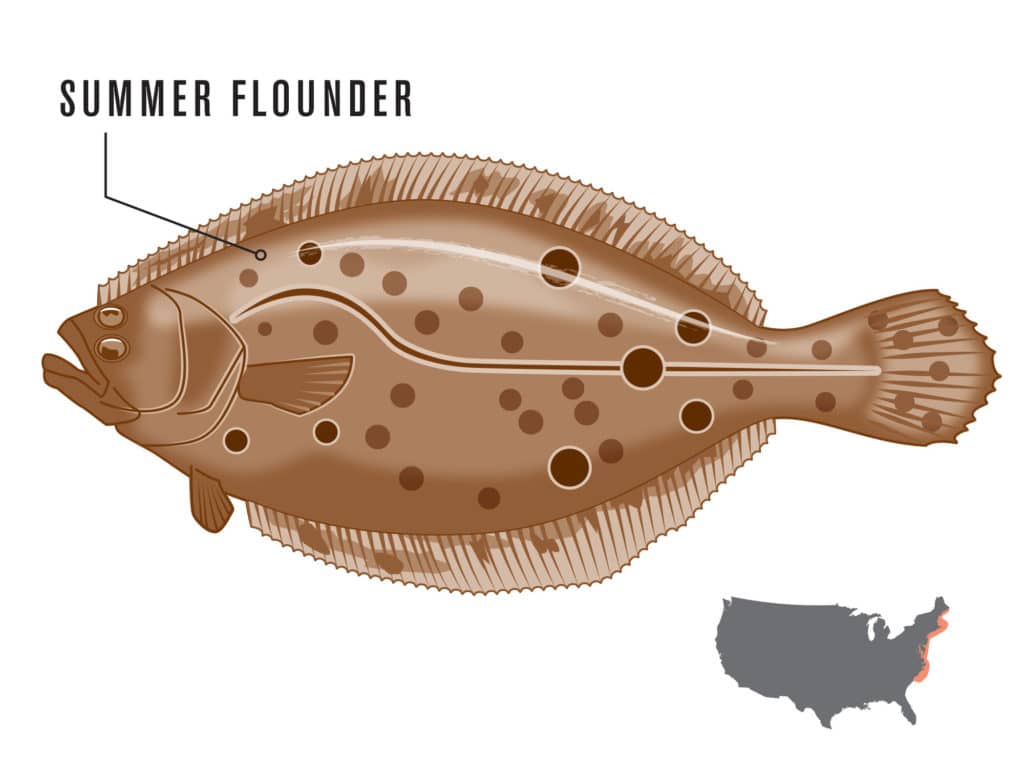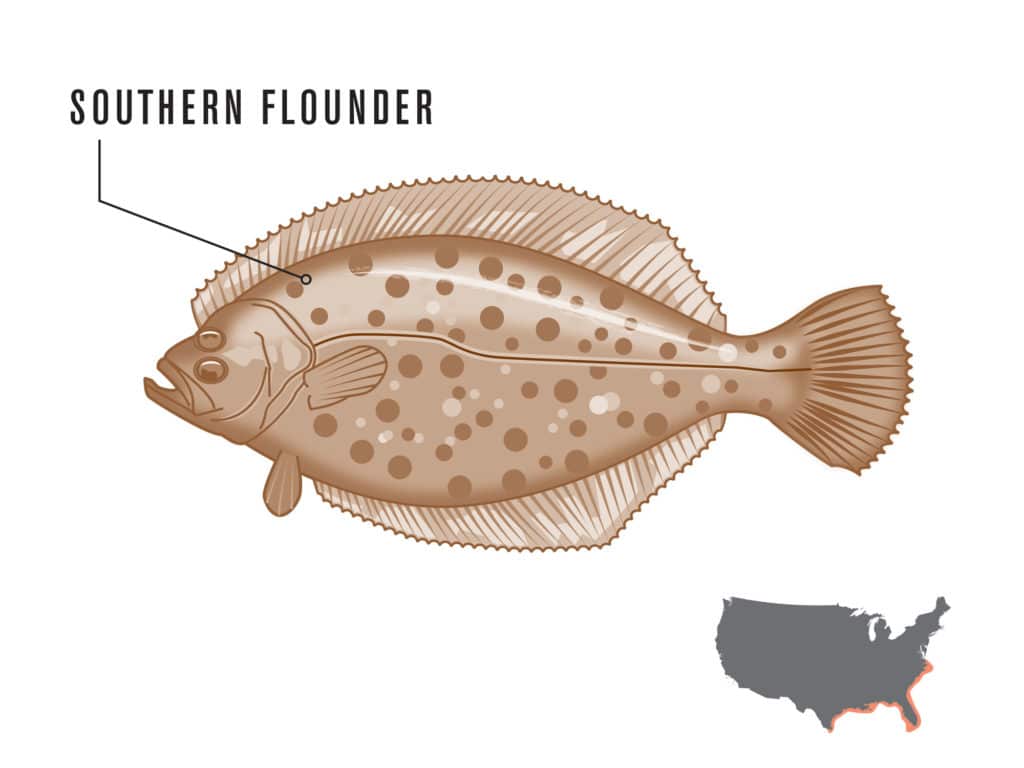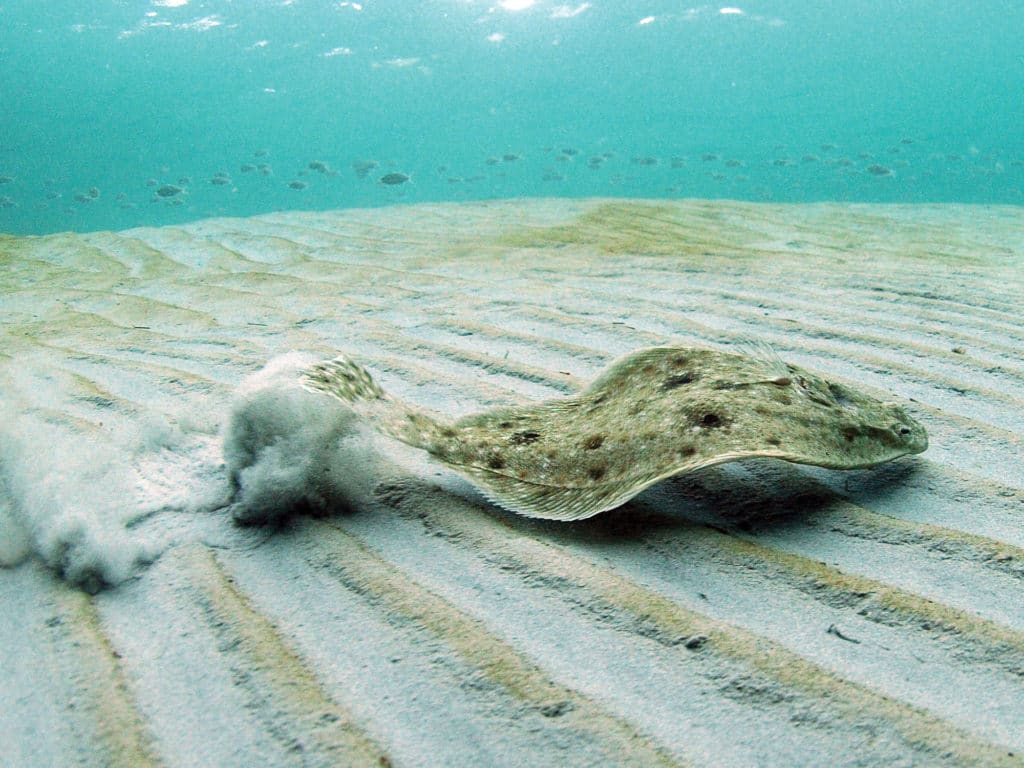
Fishing in 90 feet of water off Cape Canaveral, Florida, the furthest thing from my mind was flounder. But when Capt. Glyn Austin of Going Coastal Charters yanked a 5-pounder over the gunwale, I immediately set up with a fish-finder rig and sent a live pogy to the bottom. Within seconds I felt the telltale taps of a flatfish mouthing the big bait. After a 5-count, I locked the reel, set back, and I was on. Thanks to my Jersey fluke tactics, a doormat-size 8-pound southern flounder soon hit the deck.
Going Deep
Capt. Austin Perilli out of Brooklyn, New York, targets summer flounder in the deeper waters of Jamaica Bay, Raritan Bay and the New York Bight where depths range from 25 to 70 feet. His tactical approach is a lure tandem. Anchored by a 2- to 6-ounce Spro bucktail, the rig holds bottom well while a ½-ounce bucktail dangling from a dropper loop 18 inches above serves as a teaser. Perilli drifts a productive area and often uses the motor to hover over a hot spot and stay vertical in the strike zone. “The key to flounder fishing in deep water is to stay vertical and be precise,” Perilli says. “Hit the slowest stage of the tide to work bucktails most effectively and entice the fish as they lie on the seafloor waiting for an easy meal.”
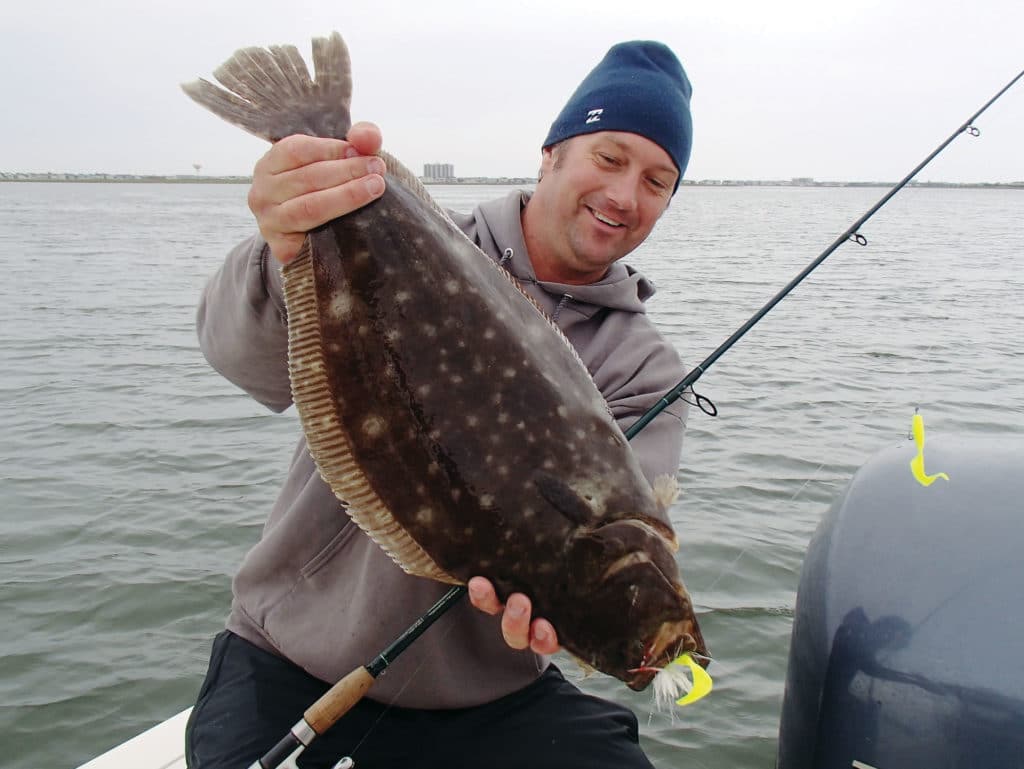
Shallow Minded
Along Texas’ central coast, Capt. Scott Sommerlatte fishes for southern flounder in Galveston Bay, Matagorda Bay and Aransas Bay, which are totally different environments where water depths average 5 to 6 feet and top out at 12 feet. “We find consistent action targeting the small marsh drains and outflows on the outgoing tides,” Sommerlatte says. Southern flounder stack up in those shallow-water funnels where he bounces a ¼- to 3⁄8-ounce jig head rigged with a 2½-inch Z-Man GrubZ. “Texas bays usually have muddy water, so I fish close to the bank in high water, then focus on troughs and drop-offs in low water,” Sommerlatte says.
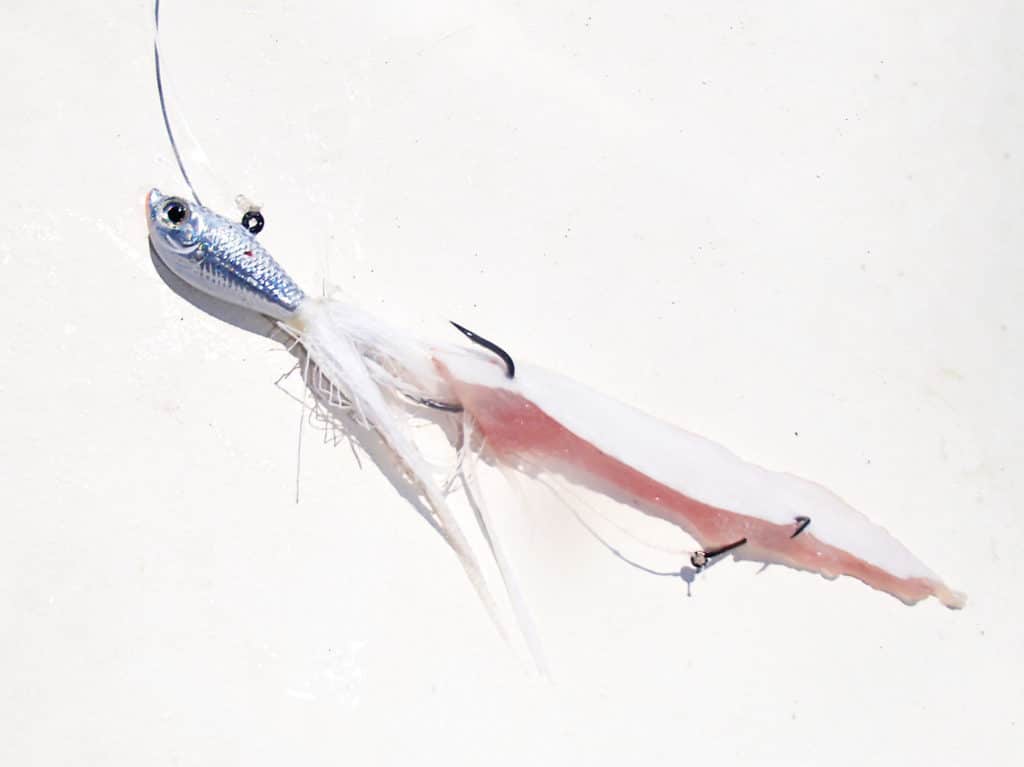
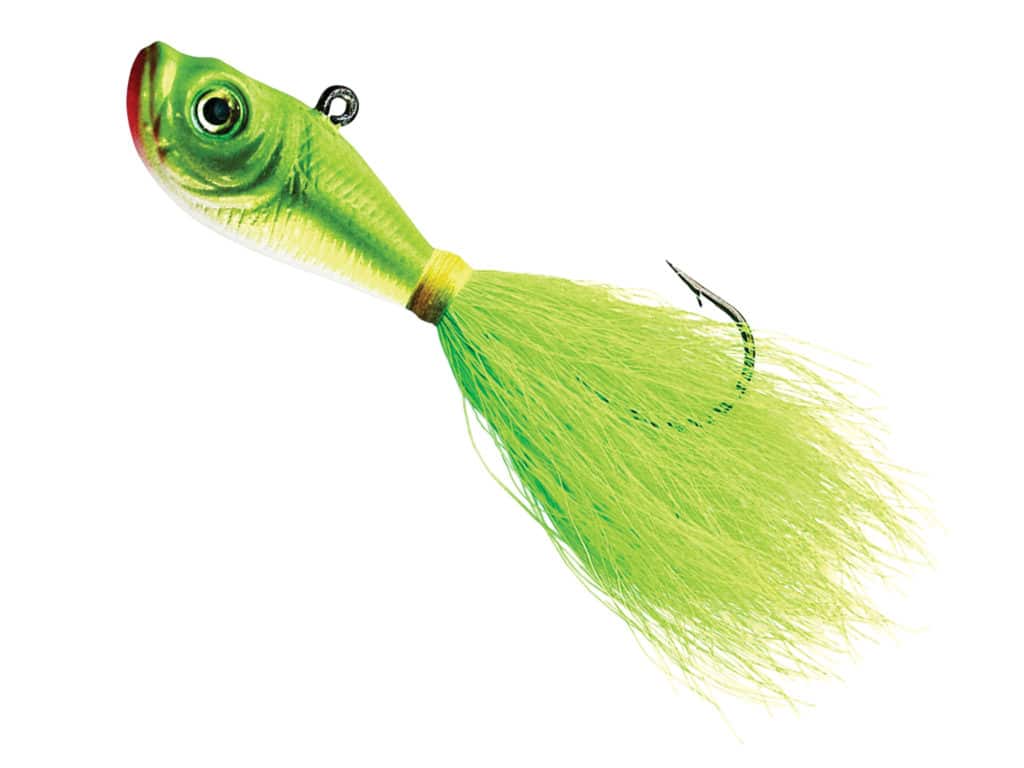
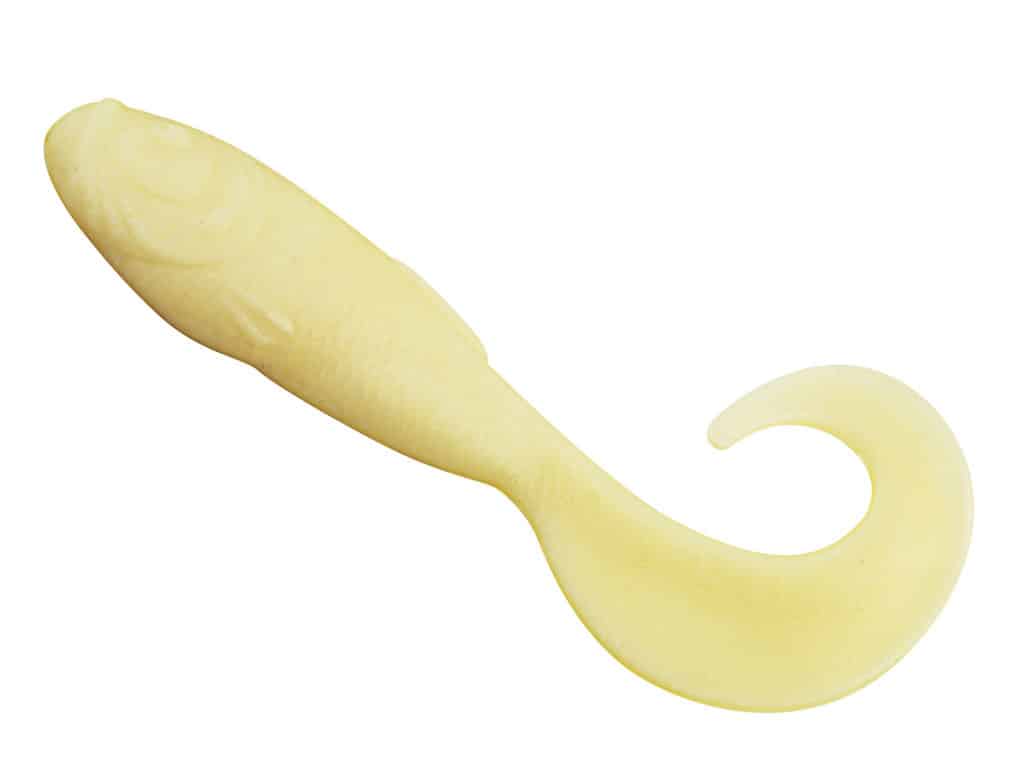
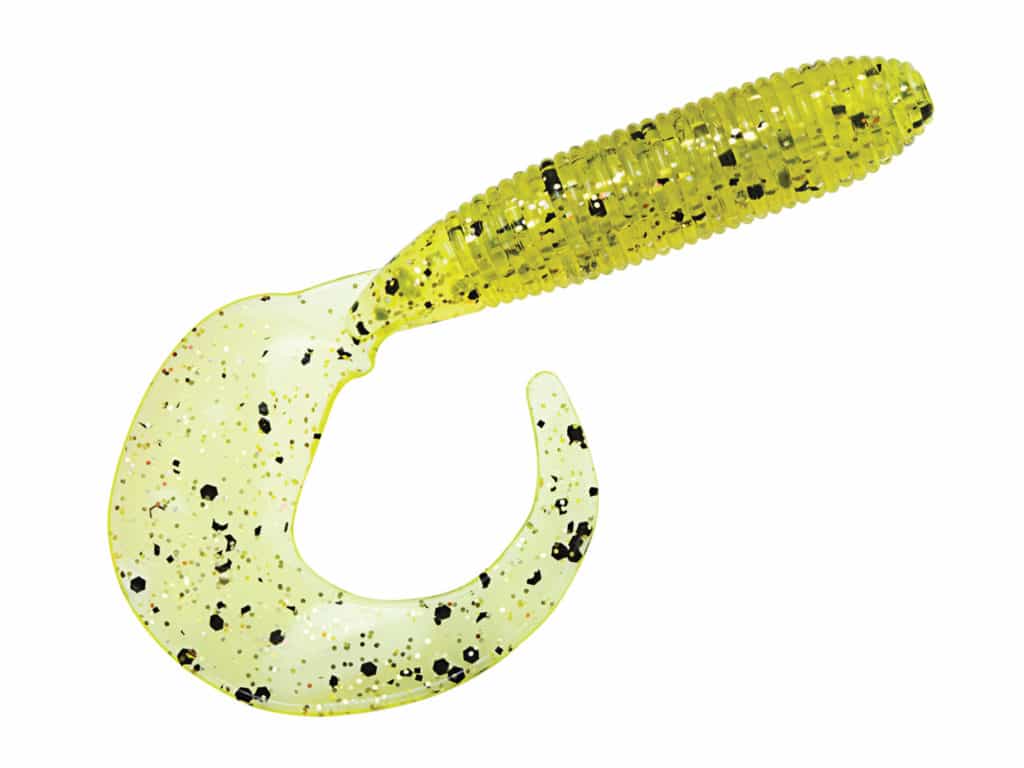
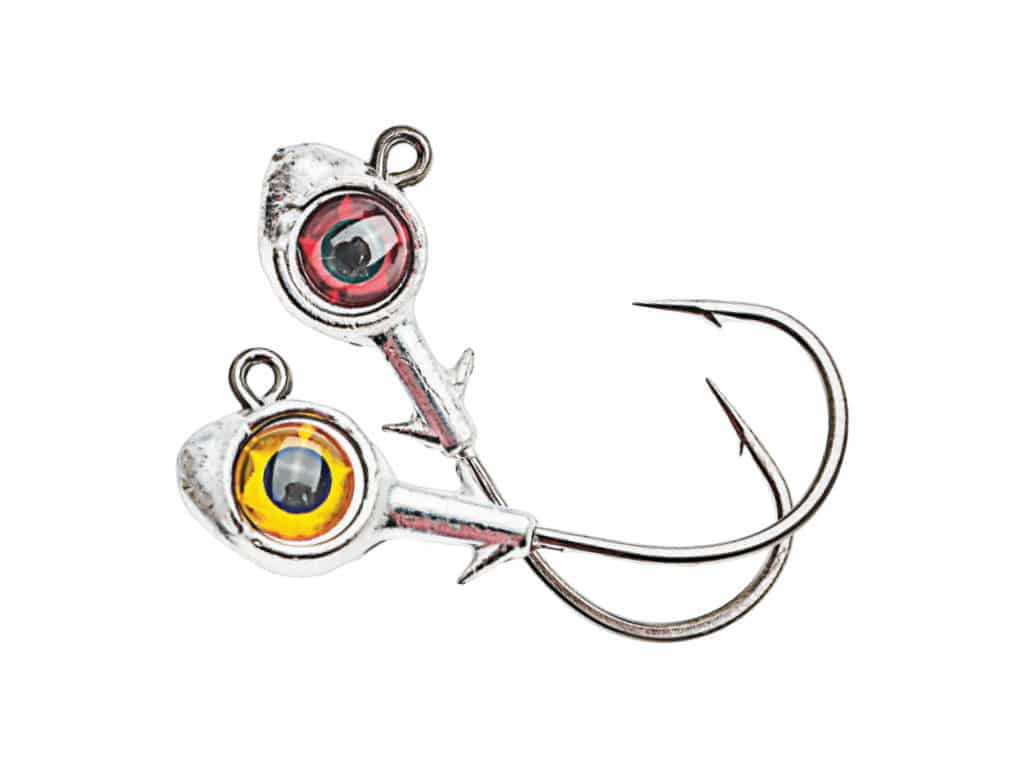
Crossover Tactics
I’ve put the two different flounder techniques mentioned to good use. When fishing Barnegat Bay in New Jersey, I frequently implement Sommerlatte’s light-tackle tactics and bounce light bucktails along the shallow flats in 3 to 5 feet of water or along channel edges in 8 to 15 feet. However, I usually tip the bucktail with a 3- to 5-inch-long strip of bluefish, mackerel or sea bass, and I add a 2/0 white bucktail 18 inches up the leader as a teaser. Down south, deepwater wrecks also hold flounder, so a heavier jig tandem often does the trick.
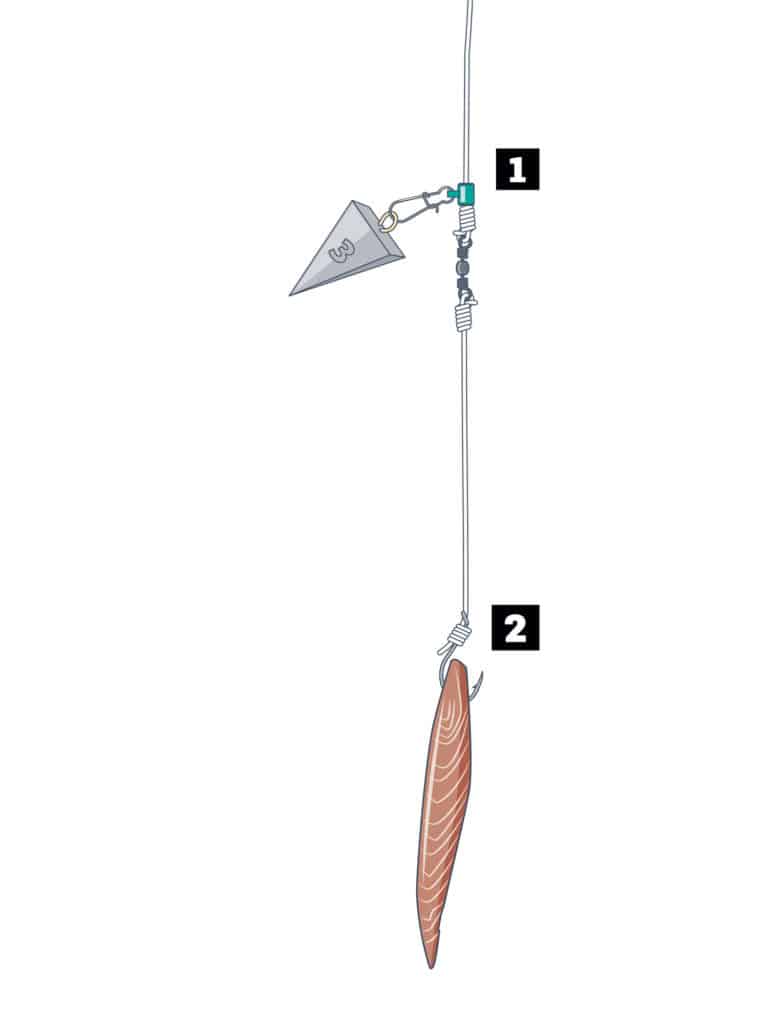
1. A swivel serves as a stopper for the sinker
2. Rig the bait on a snelled Octopus hook Tim Barker
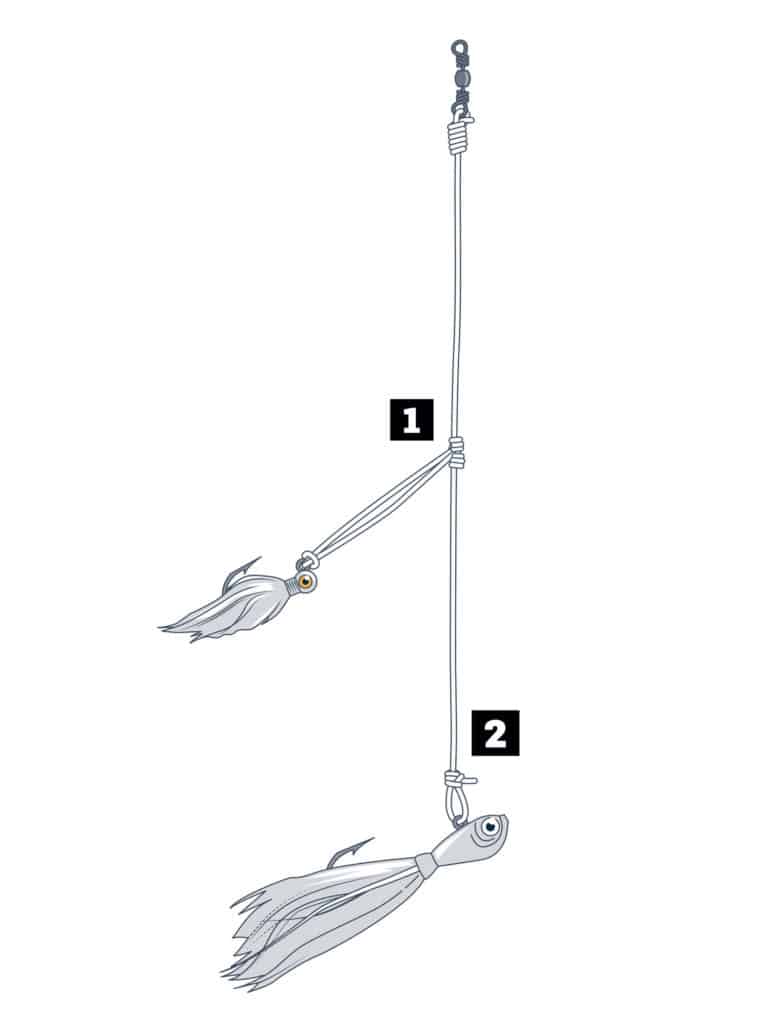
1. Attach a ½-ounce jig to the dropper loop
2. Anchor the rig with a 2- to 6-ounce jig Tim Barker
Around Structure
“We can always find fluke on the sandy channel edges in the bays, but the largest are usually in or around structure,” Perilli says. “Doormats prefer hard bottom, such as mussel beds, rock piles, wrecks and channel markers.” He likes to work the edges of structure with larger baits, like live snapper, bluefish, spot, peanut bunker and herring, which are all primary forage for summer flounder in the Northeast. That structure awareness scored me a mess of southern flounder while fishing with Glyn Austin off Cape Canaveral, Florida, where I cast big baits around the edge of a wreck in 90 feet.
But live bait isn’t the only way to go, claims Perilli. “A big bucktail is a dead-on representation of those large baits. We also use long strip baits cut from flounder belly, sea robin, mackerel or bluefish when fishing deep,” says the guide. “I cut tapered strips 1 inch wide and 8 to 12 inches long, and use a sliding rig with a snelled 3/0 Gamakatsu Octopus hook to send them down.” Southern anglers can use jacks, bonito or large pogies to fashion similar strips.
Over Sand and Mud
In Texas, Sommerlatte employs a different approach as he fishes shallow sand and mud bottoms. “Throughout the Gulf states, flounder often cast a wake when they feed on shrimp and mud minnows, so you can sight-fish for them. When we fish mud or sand flats, a subtle 6-inch drop can make all the difference,” Sommerlatte says. “Look for small changes in water depth as you try to pinpoint potential flounder spots.”
Regarding lures and bait, Sommerlatte says a slow, bouncing presentation is the best way to attract the flatfish in his home waters. “Flounder take bait little by little and don’t readily commit until they have it down their throat. So the shorter the bait and the slower you work it, the better. I’ve actually watched flounder hold on to 2½-inch grubs for a good 30 seconds before finally committing. When I feel the light weight of a fish hanging on to the bait, I give it a light tug to make the fish think its meal is swimming away. That’s when the flounder sucks it down for good.”
I put Sommerlatte’s technique into practice in Great Egg Harbor, New Jersey, and slowly bounced ½-ounce bucktails in the shallows along channel edges to claim most of my fish in the spring. Those fluke hold in certain spots on the outgoing tide, so pinpointing subtle differences in water depth is essential. Unlike the southern flounder down in Texas, those Jersey fish hit hard instead of mouthing the bait.
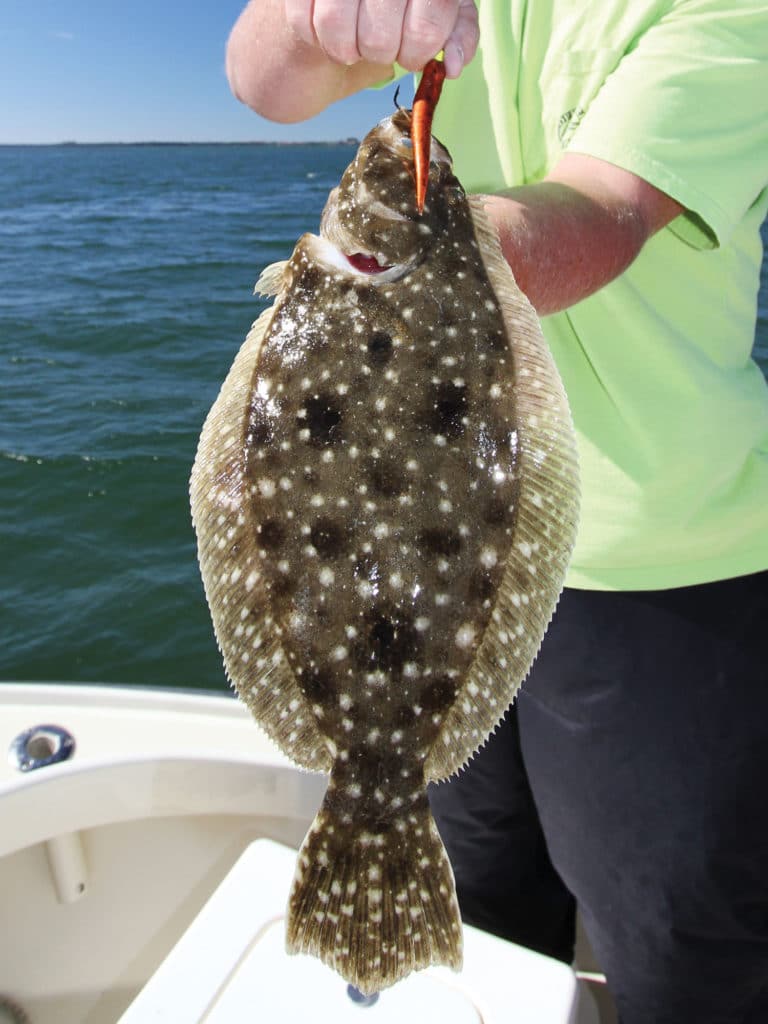
EASYGOING:
Proof’s in the Puddin’
So how effective are crossover tactics for flounder? My recent limit of 4- to 8-pound summer flounder in Florida using techniques I’ve used for fluke in the Northeast for many years proves the efficacy and versatility of the techniques. If you understand the fish’s habits, their environments and their primary forage, effective shallow- and deepwater tactics produce hefty flatfish on both sides of the Mason-Dixon Line
Flatfish ID
Two main species of flounder inhabit the bays, inlets and waters along the U.S. coasts of the Atlantic Ocean and Gulf of Mexico: Summer flounder (Paralichthys dentatus), aka fluke, which ranges from the Gulf of Maine to South Carolina and attains a weight of 15 pounds or more, and southern flounder (Paralichthys lethostigma), which rarely exceeds 8 pounds, and is widespread from North Carolina to Florida and throughout the Gulf of Mexico.
While both are left-eye flatfish (they lie on the bottom on the right side with both eyes on the left side) equipped with sharp teeth and brownish top sides that change color to blend with the surrounding bottom, each has different markings that help to tell the species apart. Summer flounder sport five prominent ocellated black spots mixed with random white spots on top, and southern flounder have small, diffused dark spots and blotches along with myriad white spots.
